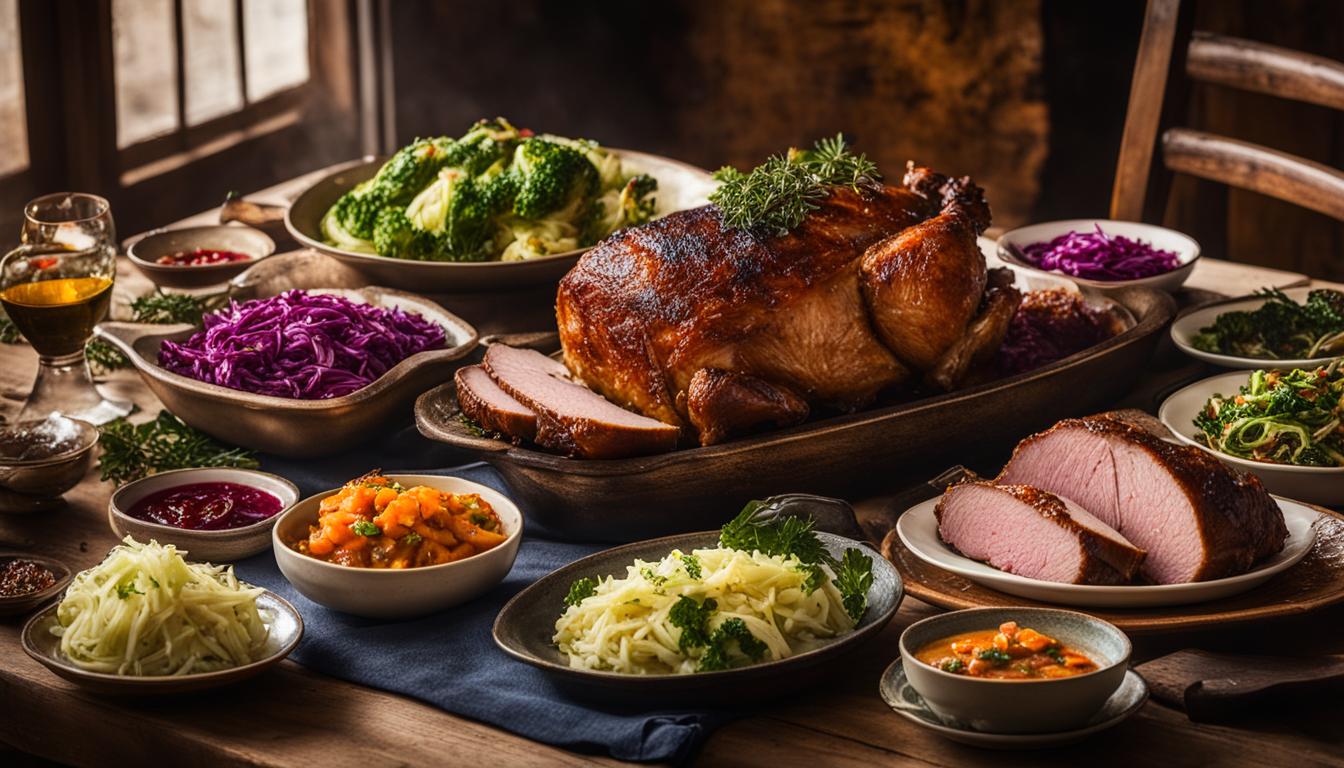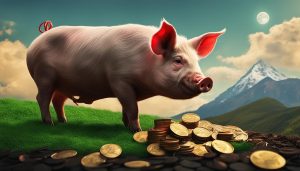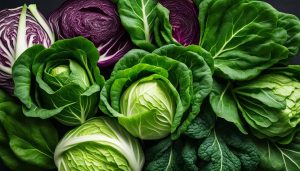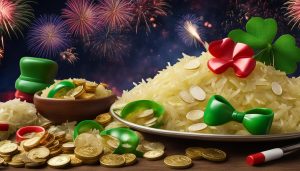According to traditional New Year’s superstitions and food traditions, certain foods are believed to bring good luck and prosperity for the coming year. One of these is pork roast and cabbage. Many cultures consider pork to be a lucky food for New Year’s because of its fat content and the way pigs “root forward.” Cabbage is also associated with good fortune due to its light green color resembling paper money. The combination of pork roast and cabbage is believed to symbolize prosperity and abundance for the year ahead.
Contents
- 1 The Symbolism of Traditional New Year’s Dishes
- 2 The Origins of the Pork and Cabbage Tradition
- 3 Other Lucky Foods for New Year’s
- 4 Conclusion
- 5 FAQ
- 5.1 Is pork roast and cabbage considered good luck for New Year’s?
- 5.2 What is the symbolism behind traditional New Year’s dishes?
- 5.3 Where does the tradition of serving pork roast and cabbage on New Year’s come from?
- 5.4 Are there other lucky foods for New Year’s besides pork roast and cabbage?
- 5.5 Should I incorporate symbolic foods into my New Year’s celebration?
- 6 Source Links
Key Takeaways:
- Pork roast and cabbage are believed to bring good luck and prosperity for the coming year.
- Many cultures consider pork to be a lucky food due to its fat content and pigs “rooting forward.”
- Cabbage is associated with good fortune because of its light green color resembling paper money.
- The combination of pork roast and cabbage symbolizes prosperity and abundance.
- Try incorporating pork roast and cabbage into your New Year’s celebration and see if it brings you luck and prosperity in the year ahead.
The Symbolism of Traditional New Year’s Dishes
Different cultures around the world have their own traditional New Year’s dishes that are considered lucky and bring good fortune. These dishes often have symbolic meanings associated with abundance, wealth, and luck. One such dish is pork roast and cabbage, which is believed to bring prosperity in many cultures.
In this traditional New Year’s dish, the pork symbolizes progress and moving forward. Pigs are known to “root forward,” representing the idea of moving ahead in life. The cabbage, on the other hand, represents wealth and financial prosperity. Its light green color resembles paper money, symbolizing the hope for a prosperous year ahead.
By serving pork roast and cabbage on New Year’s, people hope to attract good luck and abundance for the coming year. It is believed that consuming these lucky foods will bring prosperity to all aspects of one’s life, including finances, health, and relationships.
Other traditional New Year’s dishes that are considered lucky include black-eyed peas, whole fish, ring-shaped foods like doughnuts, and corned beef and cabbage. These foods have their own symbolic meanings related to luck, wealth, and fortune. By incorporating these dishes into New Year’s celebrations, people hope to start the year on a positive note and attract good fortune throughout the year.
| Traditional New Year’s Dishes | Symbolic Meanings |
|---|---|
| Pork Roast and Cabbage | Progress, moving forward, wealth, financial prosperity |
| Black-Eyed Peas | Luck, wealth, prosperity |
| Whole Fish | Prosperity, abundance |
| Ring-Shaped Foods (Doughnuts) | Year coming full circle, completeness, good luck |
| Corned Beef and Cabbage | Fortune, financial success |
The Origins of the Pork and Cabbage Tradition
The tradition of serving pork roast and cabbage on New Year’s has its origins in German and Eastern European cultures. It was brought to America by early settlers and has since become a popular dish for New Year’s celebrations. Pork was chosen as the meat of choice because of its fatty nature, which symbolizes abundance and prosperity. Cabbage, on the other hand, represents wealth and financial success due to its resemblance to paper money. By combining these two ingredients, people hope to start the new year with good luck and financial prosperity.
In German culture, the pork and cabbage tradition is known as Sauerkraut und Schweinefleisch. The sauerkraut is often cooked with apples, onions, and spices to add flavor to the dish. In Eastern European cultures, the dish is called Kapusta z Wieprzowiną and is made with sauerkraut, smoked pork, and other ingredients like mushrooms and potatoes.
“The tradition of serving pork roast and cabbage on New Year’s has been passed down through generations in my family. It’s a way to honor our heritage and bring good luck for the coming year.” – Melissa, a New Year’s enthusiast
Today, there are numerous variations of the pork and cabbage recipe, with each culture adding their own twist to the dish. Some people prefer to slow-cook the pork roast for hours to achieve tender and flavorful meat, while others opt for a quicker cooking method. The cabbage can be cooked until it’s soft and buttery or left slightly crisp for added texture.
Overall, the pork and cabbage tradition is a delicious way to celebrate New Year’s and honor cultural food traditions. Whether it’s a hearty sauerkraut and pork stew or a perfectly roasted pork loin with caramelized cabbage, this dish is sure to bring good luck and prosperity for the new year.
| Country | Cultural Name | Ingredients | Preparation |
|---|---|---|---|
| Germany | Sauerkraut und Schweinefleisch | Pork roast, sauerkraut, apples, onions, spices | Cook pork roast, sauté apples and onions, combine with sauerkraut and spices, simmer until flavors meld |
| Poland | Kapusta z Wieprzowiną | Sauerkraut, smoked pork, mushrooms, potatoes | Simmer sauerkraut with smoked pork, mushrooms, and potatoes until flavors meld |
| Hungary | Töltött káposzta | Cabbage leaves, ground pork, rice, paprika | Stuff cabbage leaves with a mixture of ground pork, rice, and spices, bake until tender |
Other Lucky Foods for New Year’s
If you’re looking to add more luck and prosperity to your New Year’s celebration, there are several other lucky foods you can incorporate into your menu. These foods have deep-rooted symbolism and are believed to bring good fortune as you ring in the new year.
Lucky Food #1: Black-Eyed Peas
In the southern United States, black-eyed peas are a staple for New Year’s. These legumes are considered symbols of luck and wealth. Tradition holds that consuming black-eyed peas on New Year’s Day will bring good fortune and financial success for the year ahead.
Lucky Food #2: Whole Fish
In many Asian cultures, serving a whole fish on New Year’s is believed to bring prosperity. The fish represents abundance and the ability to have surplus in the coming year. It is important to serve the fish with the head and tail intact, symbolizing completeness and a good beginning and ending to the year.
Lucky Food #3: Ring-Shaped Foods
Ring-shaped foods such as doughnuts and bagels are also considered lucky for New Year’s. These circular treats symbolize the year coming full circle and the continuity of life. By enjoying these foods, you are inviting good luck and a full and complete year.
| Lucky Food | Symbolism |
|---|---|
| Black-Eyed Peas | Luck and wealth |
| Whole Fish | Prosperity and abundance |
| Ring-Shaped Foods | Continuity and completeness |
These are just a few examples of the many lucky foods you can enjoy on New Year’s. Whether you go with pork roast and cabbage, black-eyed peas, whole fish, or ring-shaped foods, incorporating these symbolic dishes into your celebration can add a touch of tradition and hopefully bring you luck and prosperity in the year ahead.
Conclusion
The tradition of serving pork roast and cabbage on New Year’s is deeply rooted in the belief that these foods bring good luck and prosperity for the coming year. It is part of a larger cultural practice of eating lucky foods to invite abundance and good fortune on this important occasion. Whether you choose to follow these traditions or not, incorporating symbolic foods into your New Year’s celebration can add meaning and symbolism to the festivities.
By indulging in the classic combination of pork roast and cabbage, you are joining countless others in the belief that these dishes will bring you luck and prosperity in the year ahead. The symbolism behind pork roast, with its representation of progress and forward movement, and cabbage, with its association with wealth and financial success, is powerful and resonates with many cultures around the world.
So, as you gather with loved ones to welcome the new year, why not give pork roast and cabbage a try? See if the flavors and symbolism of these lucky foods bring you the good luck and prosperity you desire. Whether it’s enjoying the meal with family and friends or simply savoring the taste of these traditional dishes, embrace the spirit of New Year’s superstitions and make it a memorable and prosperous start to the year.
FAQ
Is pork roast and cabbage considered good luck for New Year’s?
Yes, pork roast and cabbage are believed to bring good luck and prosperity for the coming year according to New Year’s superstitions and food traditions.
What is the symbolism behind traditional New Year’s dishes?
Traditional New Year’s dishes often have symbolic meanings associated with abundance, wealth, and luck. They are believed to attract good fortune and prosperity for the year ahead.
Where does the tradition of serving pork roast and cabbage on New Year’s come from?
The tradition of serving pork roast and cabbage on New Year’s originated in German and Eastern European cultures. It was brought to America by early settlers and has since become a popular dish for New Year’s celebrations.
Are there other lucky foods for New Year’s besides pork roast and cabbage?
Yes, there are many other foods that are believed to bring good fortune and prosperity on New Year’s. Some examples include black-eyed peas, whole fish, doughnuts, and corned beef and cabbage.
Should I incorporate symbolic foods into my New Year’s celebration?
Whether you choose to follow these traditions or not, incorporating symbolic foods into your New Year’s celebration can add meaning and symbolism to the festivities. It’s worth giving it a try and seeing if it brings you luck and prosperity in the year ahead.





